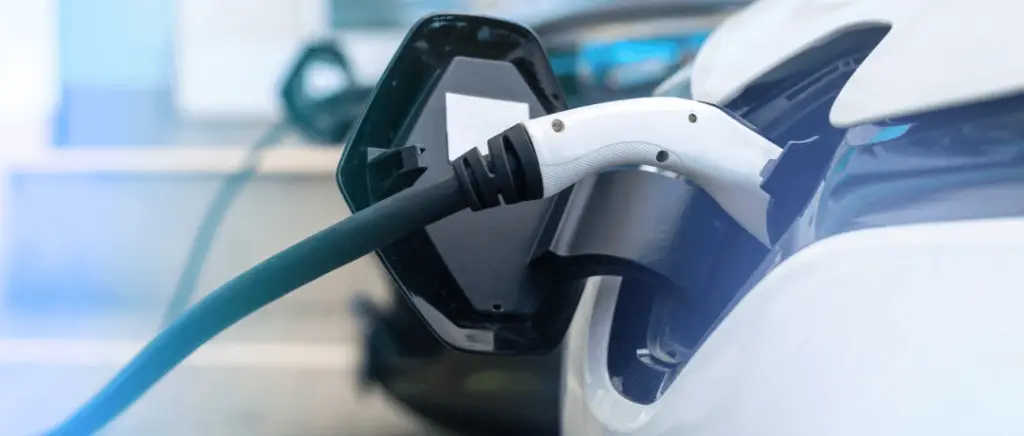Maintenance of charging stations
The importance of regular maintenance
Regular maintenance of charging points is essential to ensure that they work properly, last long and are safe. In the workplace, where charging points are often used intensively, regular maintenance helps to avoid numerous technical problems and ensure optimum use. Regular maintenance is crucial for a number of reasons:
- enables small anomalies (wear and tear, problems, errors) to be detected and corrected before they become major problems,
- ensures that all electrical components are in good condition, minimising the risk of overheating, short circuits or other dangerous incidents,
- enables rapid intervention in the event of a breakdown, reducing downtime,
- also ensures that charging points remain compliant with standard NF C 15-100 in force,
- provides significant long-term savings compared with the cost of major repairs or replacing faulty bollards.
Investing in a preventive maintenance programme is therefore a wise choice for any company wishing to optimise its vehicle fleet electric and ensure user satisfaction.
Routine maintenance procedures
1. Visual inspection
Stage 1: Checking the external condition
- Objective: Identify any visible damage to the terminal, such as cracks, discolouration or signs of corrosion.
- Action : Examine the physical integrity of the bollard, including cables, connectors and screens. Check that there is no debris or foreign objects around the terminal.
Step 2: Inspecting road signs
- Objective: Ensure that all signs and directions are legible and in good condition.
- Action : Clean the panels and replace any that are damaged or illegible.
2. Functional testing
Step 1: Load test
- Objective: Make sure that the terminal is capable of charging an electric vehicle correctly.
- Action : Connect an electric vehicle to the charging point and monitor the charging process to detect any malfunctions or anomalies.
Step 2: Checking the connectors
- Objective: Make sure the connectors are in good condition to avoid poor contacts.
- Action : Inspect connectors for signs of wear or damage and replace defective connectors if necessary.
3. Software maintenance
Step 1: Updating software
- Objective: Ensure that the kiosk uses the latest version of software to improve performance and security.
- Action : Download and install the software updates provided by the terminal manufacturer.
Step 2: Check configuration settings
- Objective: Make sure that all the configuration parameters are correct and optimised for use with the terminal.
Action : Access the terminal configuration menu and check all the parameters, adjusting if necessary.
4. Preventive maintenance
Step 1: Cleaning the internal components
- Objective: Prevent malfunctions caused by dust or dirt build-up.
- Action : Open the bollard (if access is authorised and secure) and clean the internal components using compressed air and antistatic cloths.
Step 2: Checking safety systems
- Objective: Make sure all safety devices are working properly.
- Action : Test circuit breakers, fuses and other protection systems to ensure that they react correctly in the event of an overload or short-circuit.
5. Documentation and reports
Step 1: Recording inspections and interventions
- Objective: Maintain a detailed history of maintenance actions for efficient management.
- Action : Document each inspection, test and repair in a maintenance log, including observations and actions taken.
Stage 2: Periodic status report
- Objective: Provide an overview of the status of the terminals to the company's management.
- Action : Write periodic reports summarising the results of inspections and interventions, and recommend further action if necessary.
Also read → Charging stations and courtesy: 7 reflexes to adopt
Installation and standards for company charging points
Installation standards for electric vehicle charging points
| Norme/Réglementation | Description | Objectif |
|---|---|---|
|
NF C 15-100
|
French standard for low-voltage electrical installations
|
Ensuring the safety and performance of electrical installations
|
|
IRVE (Recharging Infrastructure for Electric Vehicles)
|
Certification for installers
|
Guaranteeing the competence of installers
|
|
EN IEC 61851
|
International standard for conductive recharging systems
|
Defining the safety and performance requirements for charging stations
|
|
Decree no. 2017-26 of 12 January 2017
|
French regulations on recharging infrastructures
|
Regulate the installation and maintenance of bollards
|
|
Guide UTE C 15-722 / C 17-722
|
Practical guide to recharging systems
|
Provide practical guidelines for installations
|
|
Mobility Orientation Act (LOM)
|
French legislation on sustainable mobility
|
Increasing access to recharging infrastructure
|
Note that the NF C 15-100 applies to charging point installations, guaranteeing adequate protection against electrical risks. Installers must be IRVE certified to install charging stations with a power rating of greater than 3.7 kW. And more, EN IEC 61851 includes technical specifications for charging stations, including communication between the vehicle and the station. The Decree no. 2017-26 from 12 January 2017 requires infrastructures to comply with safety standards and be installed by certified professionals. Finally, the guide UTE C 15-722 / C 17-722 contains detailed recommendations on the installation of terminals in residential and tertiary environments.
Also read → What are the certifications and deadlines for installing a recharging point in a company?
Installation process and infrastructure required
Needs assessment
Start by assessing your company's specific recharging needs. This includes determining the number of charging points needed, their ideal location, and the types of vehicles to be charged (company cars, delivery vehicles, etc.).
Feasibility study
Call on an IRVE-certified installer (decree no. 2021-546 from 4 May 2021) for a technical inspection of the site. This stage identifies technical constraints, such as existing electrical capacity and any adaptations required.
Specifications and planning
On the basis of the inspection, the installer will provide a detailed estimate covering the cost of equipment, labour and any additional work (such as earthworks). This estimate also includes potential subsidies, such as the ADVENIR programme which can cover up to 50 % of installation costs. We recommend that you draw up a schedule for the work, taking into account the installer's availability and the company's operational constraints.
Earthworks
If necessary, earthworks will be carried out to prepare the foundations for the charging points. This may include creating trenches for the cables and installing concrete bases for the free-standing charging points.
Electrical installation
The recharging stations are installed either on walls (wall-mounted stations) or on bases (free-standing stations). The electrical cables are pulled and connected to the company's main switchboard. Installation must comply with NF C 15-100 standards and be carried out by an IRVE-certified professional.
Configuration and testing
Once the charging points have been installed, they need to be configured to work properly. This includes updating the software and programming the charging parameters. Charge tests are carried out to ensure that the charging points are working properly and are ready for use. This involves connecting an electric vehicle and checking that charging goes smoothly.
Staff training
Training employees in the use of charging points is crucial. This training covers the basic procedures for using the charging points, safety instructions, and the steps to follow in the event of a malfunction.
Monitoring and maintenance
After installation, it is advisable to take out a maintenance contract to ensure the longevity and smooth operation of the bollards. This contract includes regular inspections, software updates and rapid intervention in the event of a breakdown.
Also read → What are the best practices for installing charging infrastructure in commercial buildings?
Management and training for charging stations
Efficient management of corporate charging points
The effective management of charging points in businesses is crucial to maximising the use of infrastructure and guaranteeing an optimal user experience. To achieve this, it is essential to implement appropriate management and supervision tools. Using management software (ChargePoint, EVBox), you can :
- monitor the terminals in real time,
- manage recharging sessions,
- generate detailed reports on energy consumption and terminal status.
Remote supervision is another key aspect, enabling malfunctions to be detected quickly and action taken before they become critical. This includes software updates and remote fault diagnosis, reducing downtime and maintenance costs. Optimising the use of charging stations also involves efficient planning of charging sessions. Management software can be used to reserve charging slots, preventing overloading of the charging points and ensuring balanced use throughout the day. In addition, the introduction of pricing strategies, such as reduced rates outside peak hours, can encourage more regular and distributed use of the available infrastructure.
Training and awareness-raising
Training charging point users is crucial for a number of reasons. Firstly, proper training ensures that employees understand how to use the charging points correctly, avoiding common mistakes that could damage the equipment or lead to energy inefficiencies.
Training sessions include :
- practical demonstrations of how to use the terminals,
- safety instructions,
- the procedures to follow in the event of a malfunction.
It is also essential to cover subjects such as management of recharging sessions, the importance of regular maintenanceand best practices for optimising the use of terminals. Resources such as manuals, tutorial videos and FAQs are very useful for supplementing training and serving as an ongoing reference for users.
In addition to technical training, it is important to raise employee awareness of the benefits of electric vehicles and charging points (long-term cost savings, environmental benefits and sustainable development initiatives). Effective awareness-raising encourages employees to adopt electric vehicles, thereby increasing the use of installed charging points.
A good training programme should also include ongoing support for users. This means setting up a dedicated helpdesk, able to respond quickly to questions and resolve any problems. Regular updates on new kiosk features and best practice can also help to maintain a high level of competence among users.
Also read → Electric car driver training for employees: how will it work in 2024?
Conclusion
The maintenance and management of corporate charging points are crucial to guaranteeing their performance and longevity. Regular maintenance, appropriate user training and the use of management software optimise the efficiency of the infrastructure. Investing in these areas not only supports the energy transition, but also improves employee satisfaction and the company's operational performance.
If you would like to find out more about the tax credit for in-car charging points 2024For more information, see our article on this subject.
Our Beev experts will propose a package tailored to your needs and your projects.
Apply now!
































